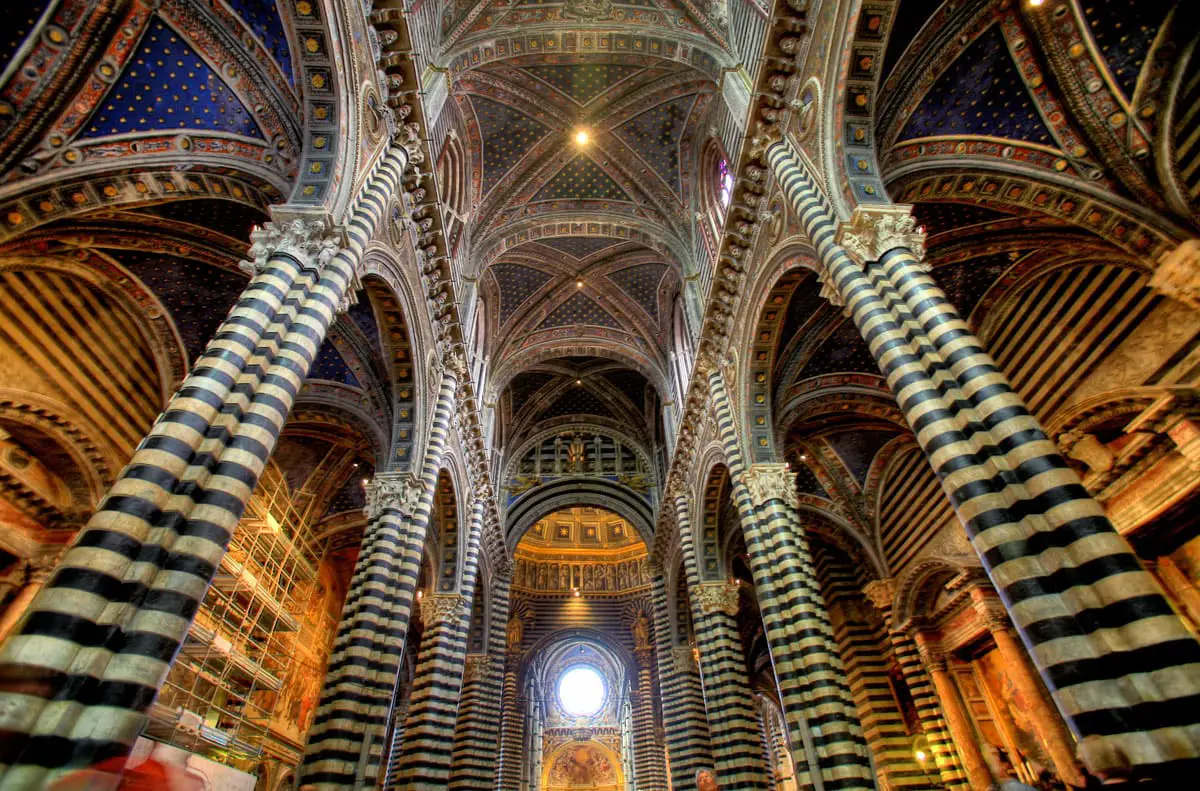World 🢖 Europe 🢖 Italy 🢖 Tuscany
Churches 🢔 Religious architecture 🢔 Architectural wonders 🢔 Categories of wonders
Wonder
Florence Cathedral
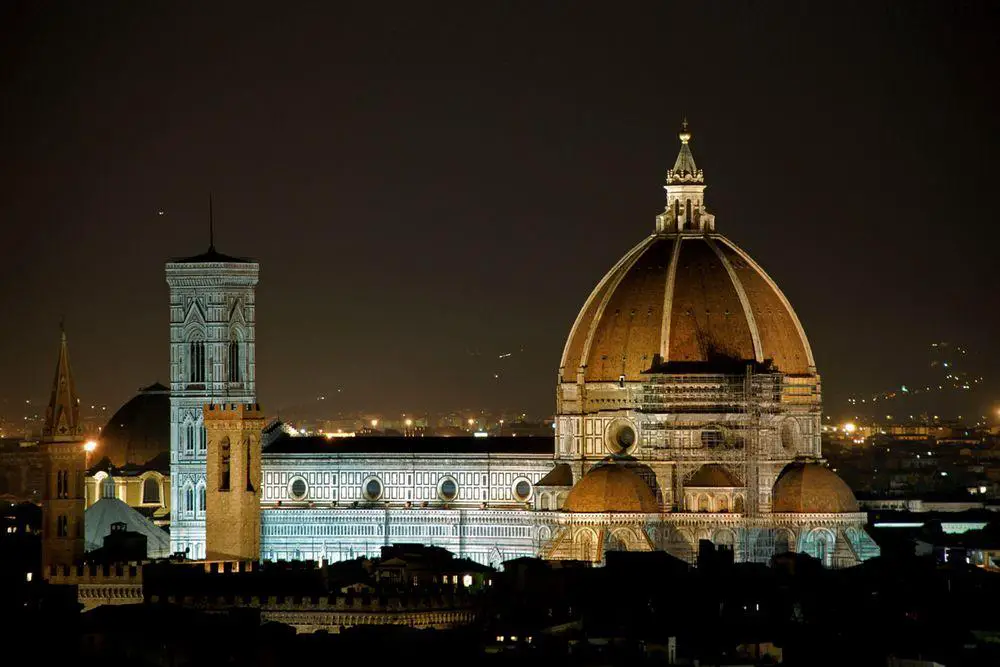
 In short
In short
There are few buildings with such great importance for world architecture as Florence Cathedral. Many world-famed architects and artisans have built it but Filippo Brunelleschi – the true genius of structural engineering – should be mentioned first.
Cathedral is devoted to St. Mary the Flower. This is an allusion to the lily – a symbol of the magnificent Florence.
 76.9%
76.9%
GPS coordinates
UNESCO World Heritage status
Architectural style
Architects
Height
Year of construction
Branch of Christianity
Map of the site
If you see this after your page is loaded completely, leafletJS files are missing.
 In detail
In detail
Florence
City – miracle of medieval Italy
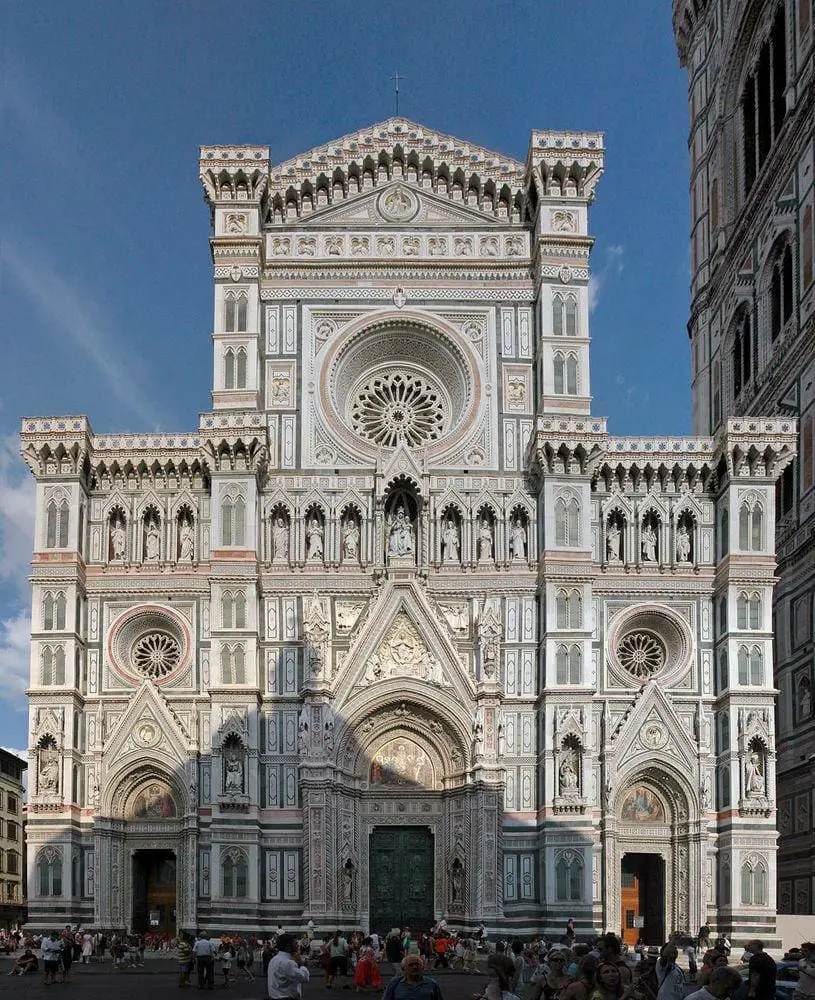
Florence – former Roman military camp – today is seen as a miracle of medieval Italy, an incredibly prosperous city that provided work and fame to anyone who had skills, imagination, and vigors. City and its vicinity increased their wealth and prosperity step by step, starting from the 7th – 9th century AD. Starting from the 11th century city was powerful and ambitious enough to develop its first major construction projects meant for show-off.
As time went by, Florence became more influential and its oligarchic rulers were patronizing the arts. The public loved the show-off and the fact that Florence was outclassing other Italian cities. But artists in Florence created works that were a lot more than shallow pomp.
City of hungry artists
It is trendy to speak about creative cities today – about cities with huge creative potential, cities where people think, plan and act with imagination. Often such cities tend to be filled with hordes of artists, some successful but most – living in poverty and step by step nearing full disillusionment.
Florence did have all of this in medieval and Renaissance times. As Giorgio Vasari (first modern art historian – also Florentine innovation!) described it, artists in Florence were in constant hunger, always in fierce fights (frequently – real fights) for the next order. We know some hundreds of the most successful artists, but we know nothing about the many thousands who did not achieve much.
Building of Florence Cathedral
New cathedral over the old one
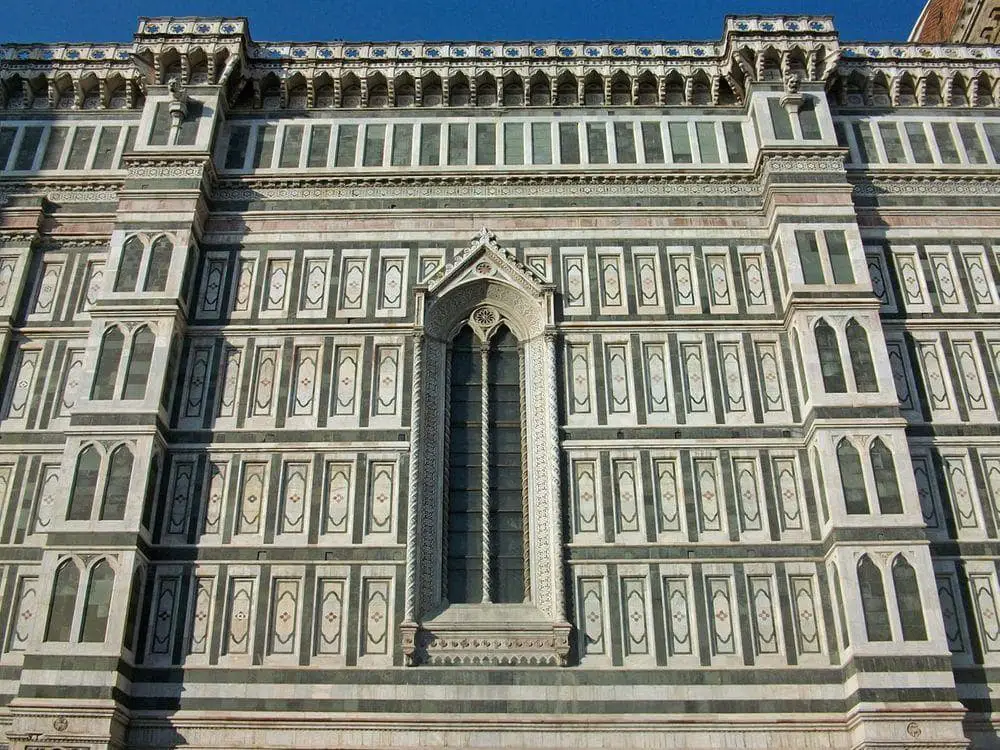
At the end of the 13th century the governors of Florence were increasingly dissatisfied with the fact that, contrary to its competitors (Pisa, Genoa, Lucca, Siena, and others), the city did not have a proper cathedral.
The old Florence cathedral – Santa Reparata – was built in the early 5th century AD. This old building was crumbling and became too small for the fast-growing city.
It was decided to build the new cathedral on the site of the old one. In fact, Santa Reparata was included in the new building, the new Florence Cathedral was built over it, and then – in 1375 – the old cathedral was demolished.
Build history
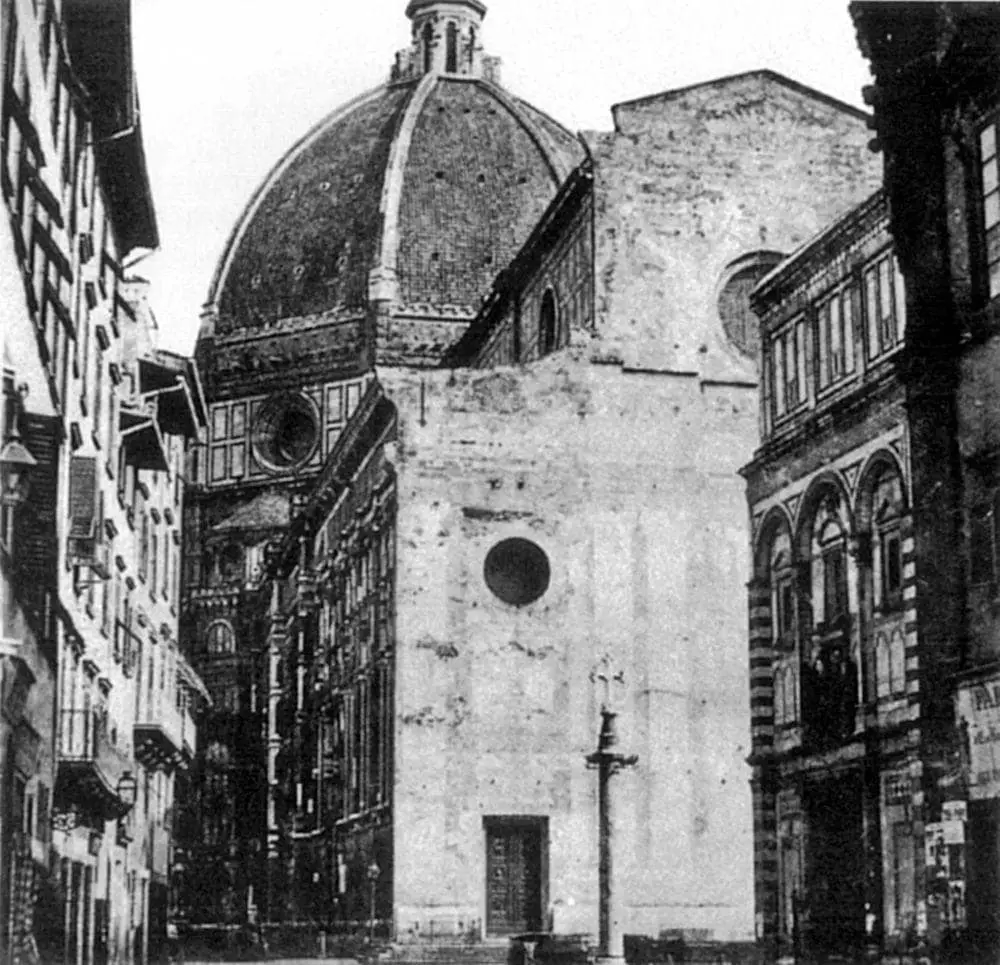
The build history of Florence Cathedral is as follows:
- 1294 – construction of the cathedral was approved, design of the great Arnolfo di Cambio was selected. Cathedral was designed in Italian Gothic style, as a basilica with three naves and an enormous, octagonal dome. Di Cambio planned to build a dome of unseen, gargantuan size – but even this was increased in later times.
- September 9, 1296 – laid foundation stone.
- 1296 – around 1310 – construction under the guidance of di Cambio.
- Around 1310 – 1331 – after the death of di Cambio works slowed down.
- 1331 – remains of Saint Zenobius were found in the old Florence Cathedral. St. Zenobius was the first bishop of Florence (337 – 417). He reportedly resurrected several dead people, including a child overrun by a cart. This find is seen as a miracle and serves as an impetus to renew the active construction of the cathedral.
- 1334 – 1337 – the great Giotto di Bondone was appointed to oversee the construction works. Works were continued according to the original design of di Cambio. Giotto designed and built the beautiful Campanile next to the cathedral.
- 1337 – 1348 – after the death of Giotto his assistant Andrea Pisano took over the works. Giovanni di Lapo Ghini took over the lead for a while in 1344.
- 1348 – Black Death comes to Florence, and half of the people in the city die. Pisano dies, presumably from the plague. Works were stopped and the death of many artists and their patrons slowed down the development of arts in Italy. Many works of art following the epidemy show apocalyptic themes, and grotesque figures.
-
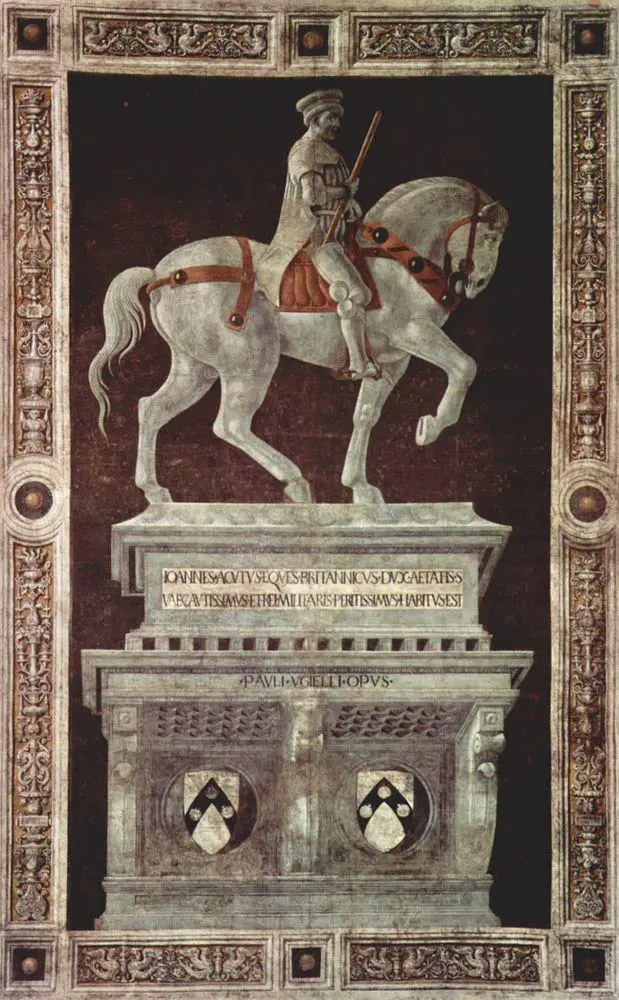
Funerary Monument to Sir John Hawkwood, Paolo Uccello /Matthias Kabel, Wikimedia Commons, public domain 1349 (1351) – 1364 – construction was resumed, led by Francesco Talenti. He completed the campanile, and started redesigning to make the Florence Cathedral larger – but finally was dismissed after much criticism and complaints. The lower part of the facade was built.
- 1364 – 1370 – Giovanni di Lapo Ghini took over the works and expanded the size of the planned dome from 36 to 41 m.
- 1367 – Neri di Fioravante proposed interesting structural innovations which mark the departure from Gothic style to a new thinking in architecture – the future Renaissance style. He proposed a design that allowed him to avoid the use of buttresses – traditional detail in Gothic architecture. Italian architects disliked buttresses and the use of this architectural detail was forbidden in Florence. Fioravante and his colleagues proposed to build a dome of similar size to the dome of the Pantheon in Rome. Knowledge about the technology for its construction was lost – but they were confident that sooner or later it will be found.
- 1380 – the nave of the cathedral was built after the removal of the old Santa Reparata cathedral.
- 1419 – a competition was announced to build the dome of Florence Cathedral. Two engineers entered the competition – Lorenzo Ghiberti and Filippo Brunelleschi, long time rivals. Brunelleschi won. Giorgio Vasari wrote that one of the tasks for competing architects was – to make an egg stand vertically on a marble plate. Brunelleschi simply hit one end of the egg – and left it standing on the marble plate.
- 1420 – 1436 – construction of the dome by Brunelleschi. He used a multitude of brilliant innovations, overcoming diverse problems and achieving new heights in structural engineering, which were not surpassed for centuries to come.
- March 25, 1436 – cathedral is consecrated.
- 1436 – 1469 – large lantern with the copper ball on the top of the dome was built, already after the death of Brunelleschi in 1446. It is possible that the young Leonardo da Vinci was working at it as an apprentice. Da Vinci was much impressed by the machine drawings of Brunelleschi and made some outlines to remember these designs.
- 1568 – 1579 – the interior of the dome was covered with one of the largest frescoes in the world.
- 1587 – 1588 – the unfinished facade of the cathedral was removed as totally outmoded. Competitions for new designs failed and cathedrals stood bare until the 19th century.
- 1864 – 1887 – a new competition for the construction of the facade was held. Neo-Gothic design of Emilio de Fabris won and works were finished after his death by Luigi del Moro.
Design of Florence Cathedral
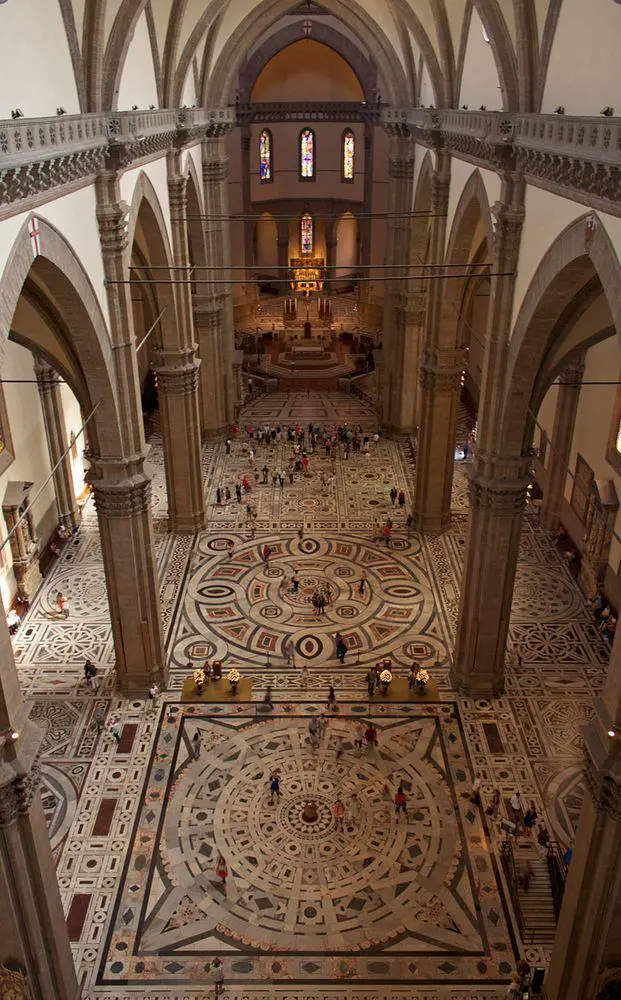
Cathedral in the plan has a form of Latin cross. It is 153 m long and 90 m wide at the crossing.
Florence Cathedral is the largest building in medieval Europe, it can contain up to 30 000 people. It pushed the limits of construction technologies and for several centuries it was unsurpassed in many aspects.
This building was so ambitious that a new approach to architecture had to be invented – it marked the departure from the Gothic style and the beginnings of Renaissance architecture.
Structurally it belongs to the Gothic style except for the dome which is a forerunner of the Renaissance style.
The dome
The most surprising part of the Florence Cathedral is its dome. It looks oversized if compared to the rest of the cathedral and it was the largest dome in the world until 1881, with a diameter of 45.52 m and a height – of 90 m. This remains the largest masonry dome in the world up to this day.
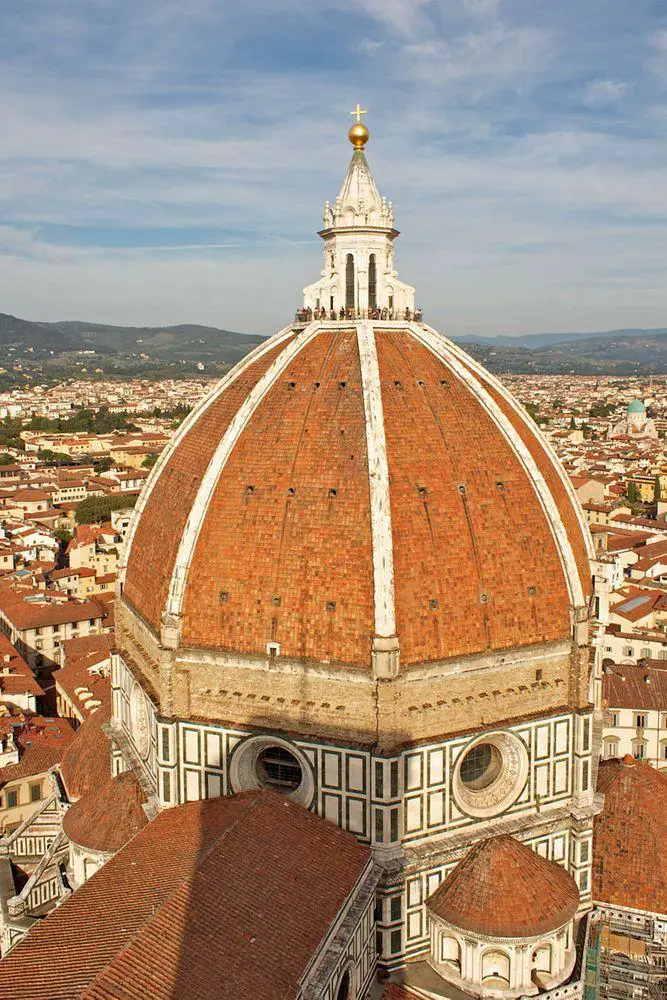
Arnolfo di Cambio already in 1294 planned that the cathedral will have a giant dome – but, as the time went on and the ambitions increased, the dome became larger and larger – at least in plans.
It was clear that the dome should not have buttresses – a forbidden architectural detail in Florence. It was also not possible to build scaffolding for the structure – the vicinities of Florence did not have that much wood. Such scaffolding would be very complex to build and it would need to stand for a long time – e.g. it would be almost like another giant building.
Pantheon in Rome (43.4 m diameter) was built in 128 AD from concrete – but the knowledge to build such structures was lost.
It seems, people in Florence knew that a genius will come and invent solutions – and it happened. They had to wait for more than one century until Filippo Brunelleschi invented daring and very innovative technologies which enabled this construction.
Brunelleschi (1377 – 1446) worked mostly in Florence, learned as a goldsmith, but was very skilled at mechanics, and engineering – and became one of the most renowned structural engineers and architects of all times.
Brunelleschi used bricks for the dome – comparatively light material which allows the creation of different forms. Dome is octagonal, thus adding more complexity to the design – also the chains (hoops) around the dome needed to have an octagonal form in order not to squeeze the corners of the octagon. No support structures were used – the dome held itself, workers, and devices for the construction.
More than 4 million bricks were used with a total weight of some 37,000 tons. Brunelleschi invented a hoist to raise heavy weights – and patented his invention. This was the first patent of modern times.
Dome was built with an opening in the center for lighting. A lantern was built over the opening.
Frescoe in the dome
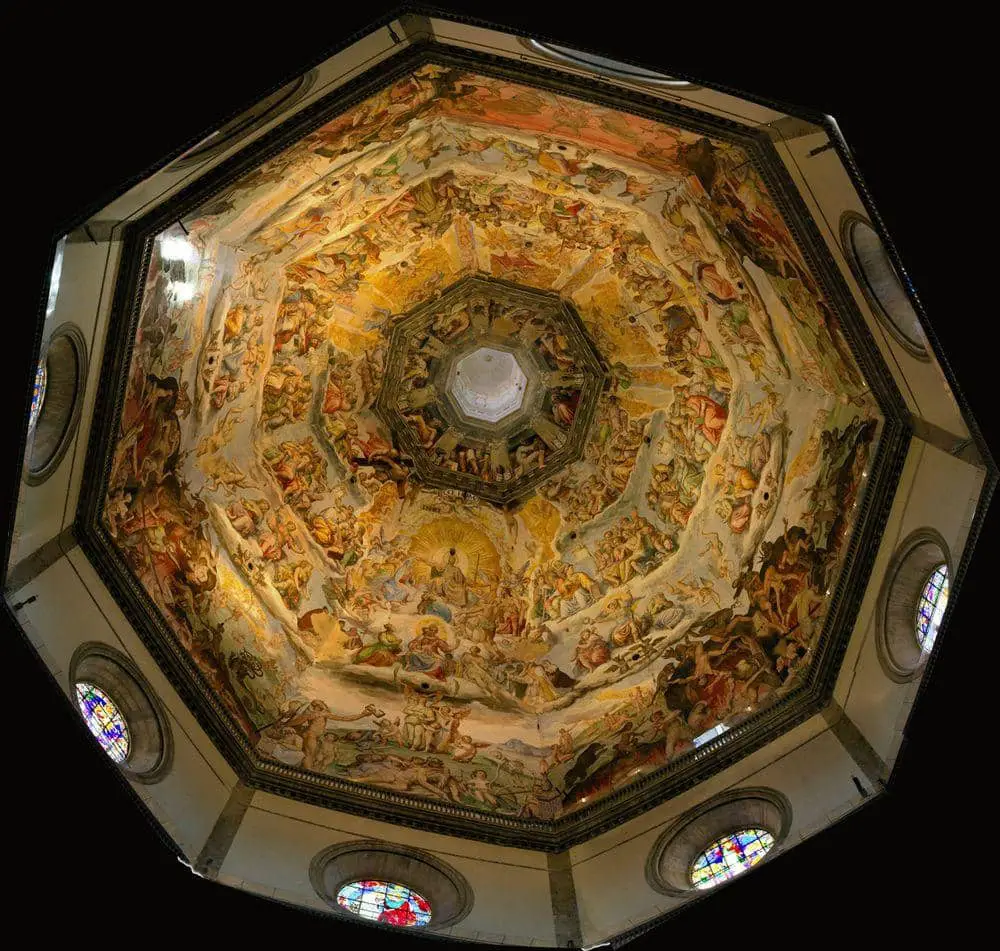
Brunelleschi proposed to cover the interior of the dome with gold – to make the most of the light coming in through the lantern.
This was not implemented, and the dome now is covered with the 3,600 m ² large representation of the Last Judgement. This fresco was started by Giorgio Vasari (making true fresco on wet plaster) and Frederico Zuccari (working on dry plaster) in 1568 and works lasted until 1579. The artistic quality of these giant frescoes is uneven – different artists were working on different parts of it.
It is possible that this is one of the largest frescoes in the world, possibly surpassed by the frescoes in Sigiriya, Sri Lanka.
Exterior, facade
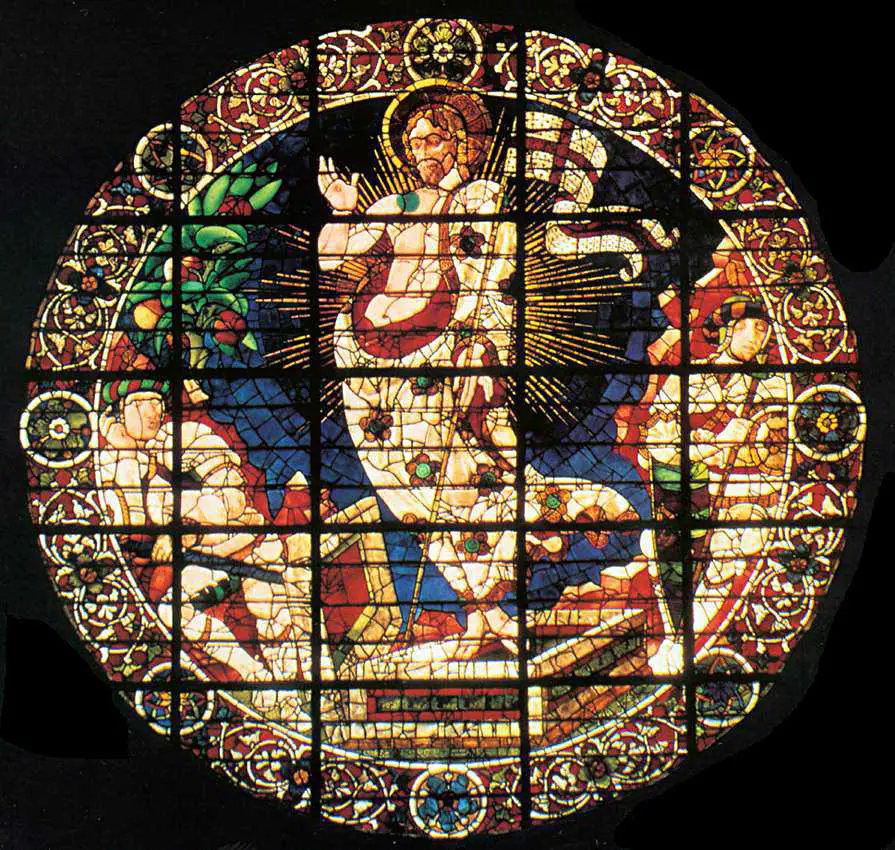
The polychrome exterior of Florence Cathedral is unusual for such giant buildings. Many sorts of marble have been used for it, mainly white marble from Carrara, green – from Prato and red – from Siena.
Facade decoration was designed to create a uniform ensemble with the existing facades of Baptistery and Giotto’s Campanile – two outstanding buildings next to the cathedral, forming a single ensemble.
Interior
If compared to the exterior, the interior of the Florence Cathedral seems almost austere. Nevertheless here are located important works of art.
Very valuable are 44 stained glass windows from the 14th and 15th centuries, made by such masters as Donatello, Lorenzo Ghiberti, Paolo Uccello, and Andrea del Castagno.
Interesting artworks are the almost monochrome frescoes "Funerary Monument to Sir John Hawkwood" (Paolo Uccello, 1436) and "Equestrian statue of Niccolò da Tolentino" (Andrea del Castagno, 1456) – both resemble the colors of marble stone.
Should be mentioned also the clock which shows Italian time – 24 hours, with the day ending at the sunset. Few such clocks have been preserved.
References
- Il Duomo di Firence – Cattedrale di S. Maria del Fiore – the official website. Accessed on the 22nd of July 2012
- Opera di Santa Maria Del Fiore, Cattedrale di Santa Maria del Fiore. Accessed on the 23rd July 2018
Florence Cathedral is included in the following list:
 Linked articles
Linked articles
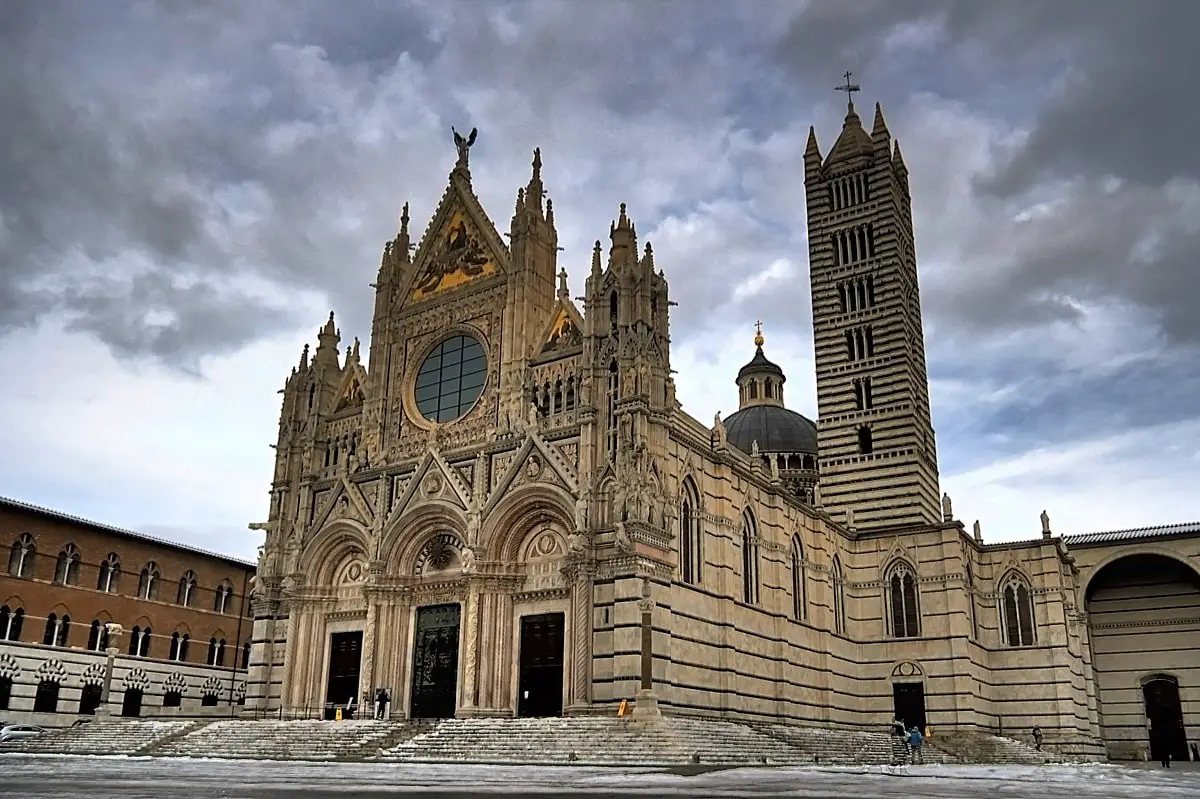
Top 10 most beautiful churches of Italy
This article lists the greatest churches of Italy: the best ones among the hundreds of very interesting buildings. Each of them has unusual and beautiful architecture, great works of art, and with an exciting history that sometimes is 2 thousand years long.
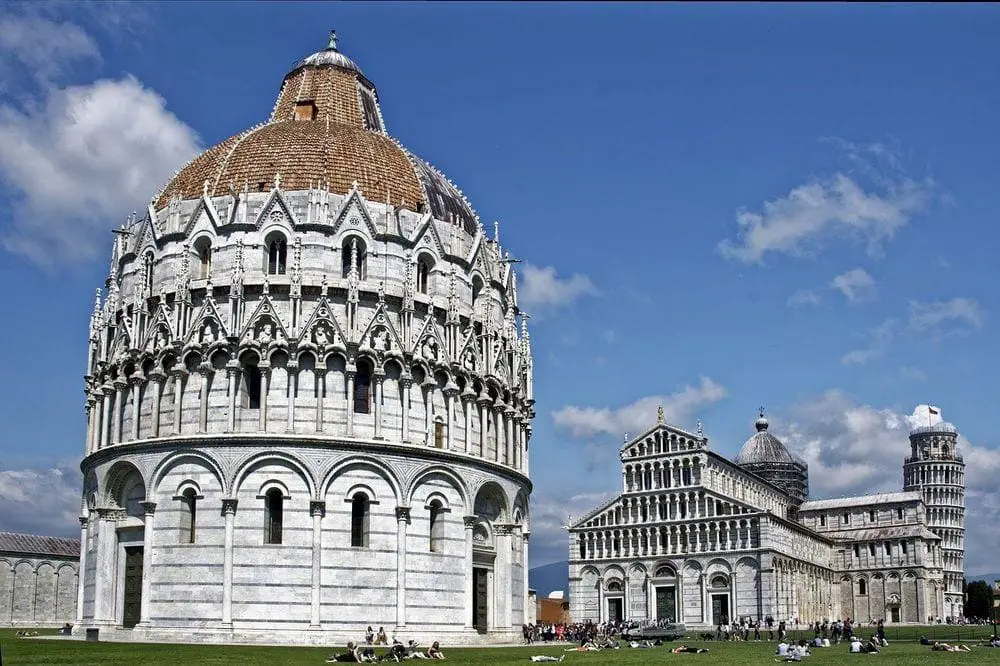
Wonders of Italy
Italy is one of the most popular destinations in the world due to its unsurpassed cultural heritage – this country has got some of the finest monuments of architecture and art in the world.
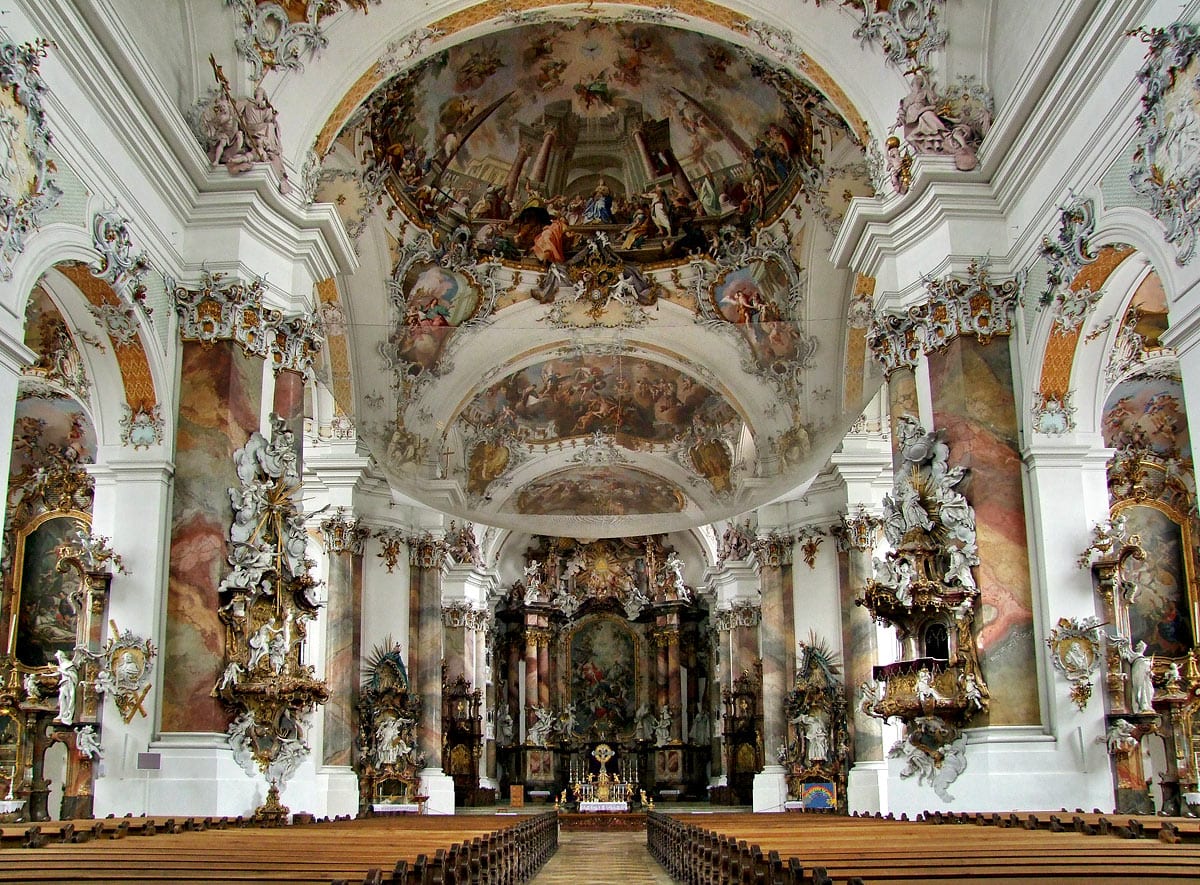
Churches
Throughout the millennia Christian churches have been the epitome of architecture and arts achievements in Western culture.
 Recommended books
Recommended books
Brunelleschi’s Dome: How a Renaissance Genius Reinvented Architecture
On August 19, 1418, a competition concerning Florence’s magnificent new cathedral, Santa Maria del Fiore–already under construction for more than a century–was announced: “Whoever desires to make any model or design for the vaulting of the main Dome….shall do so before the end of the month of September.” The proposed dome was regarded far and wide as all but impossible to build: not only would it be enormous, but its original and sacrosanct design shunned the flying buttresses that supported cathedrals all over Europe. The dome would literally need to be erected over thin air…
Pippo the Fool
The Cathedral of Santa Maria del Fiore in Florence was a marvel of art, architecture, and engineering. But it lacked a finishing ornament, a crown–a dome! The city fathers had a solution: to invite the finest masters to compete for the chance to design a dome. The rumors of this contest reached the ears of Filippo Brunelleschi, better known in Florence as Pippo the Fool. As soon as he heard about the contest, Pippo knew it was the chance he had been waiting for. “If I can win the contest, I will finally lose that nickname once and for all!”

